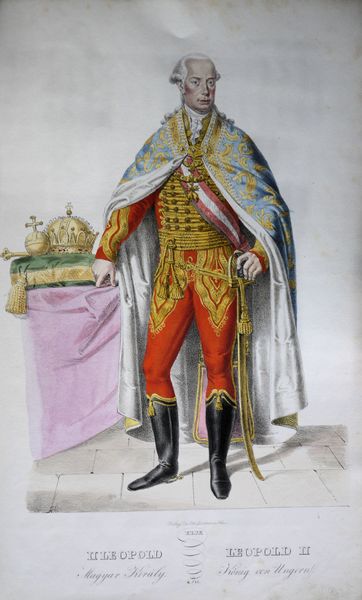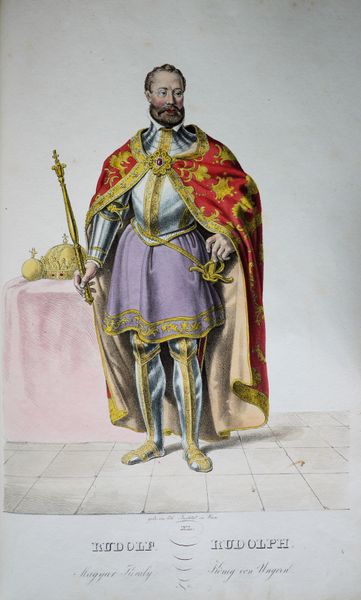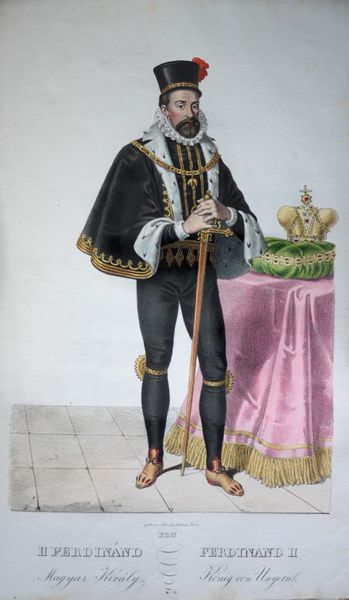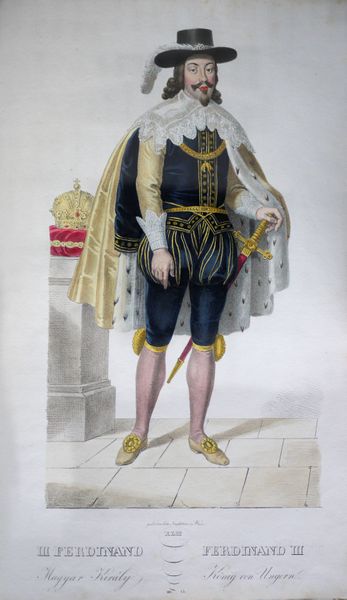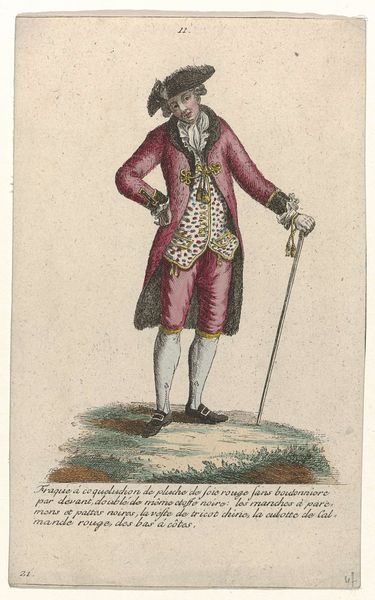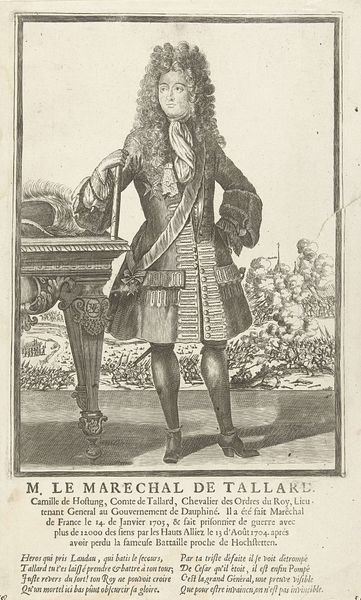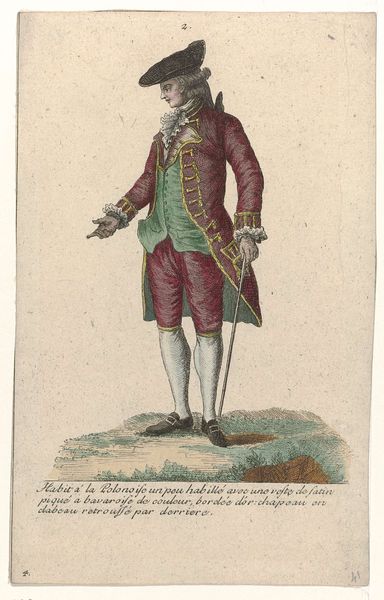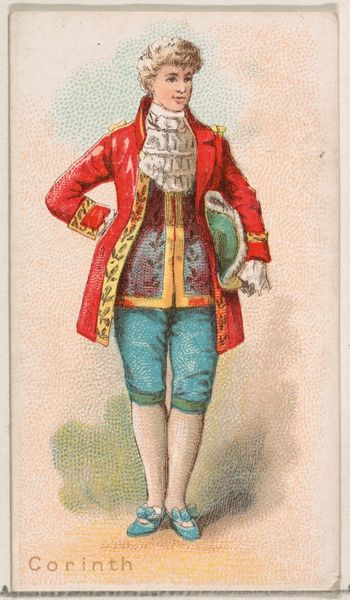
painting, print
#
portrait
#
painting
# print
#
oil painting
#
romanticism
#
history-painting
#
portrait art
Copyright: Public domain
Curator: This is Josef Kriehuber’s "Leopold I," a painting created in 1828. It depicts Leopold I of Hungary. Editor: My first thought is how carefully balanced the elements are. The gold embellishments provide such a striking visual rhythm against the deep blues and blacks. And the softness of the pink drapery creates a wonderful contrast against Leopold’s stiff formality. Curator: Indeed. This piece emerges from the Romanticism movement. Look closely at how Leopold, known for consolidating Habsburg rule amidst various wars and internal conflicts, is portrayed. There's an intentional emphasis on the symbolism of power, but I also note a tension between representation and lived realities given that this was produced long after his actual reign. Editor: You see the symbols; I see the structure. The meticulous arrangement of colors leads your eye from his face, down the intricate patterns of his clothing, and eventually settles on the crown. Curator: That crown is strategically placed. Consider the historical context: Leopold's reign, marked by the expansion of Habsburg influence and resistance to Ottoman aggression, shaped Central Europe. How does this formal portrait contribute to the narrative of imperial dominance and the subjugation of diverse populations within the Austro-Hungarian empire? Editor: Perhaps that is something this painter may not have necessarily intended or considered. It’s equally fascinating to explore how the print medium influences our reading. Note the flattening of space and emphasis on line over tonal variation. Does this shift in medium alter its perceived aura of authority? Curator: It certainly allows for broader dissemination of a carefully curated image. And this is exactly what makes unpacking such portrayals crucial: How did these representations shape public perception and legitimize power structures? Editor: Exactly. For me, this work offers so many details that capture the imagination, like the precise balance of colour and tone. Curator: And I am compelled to explore the deeper implications and resonances it has within the landscape of societal power and the legacies of historical injustices.
Comments
No comments
Be the first to comment and join the conversation on the ultimate creative platform.

